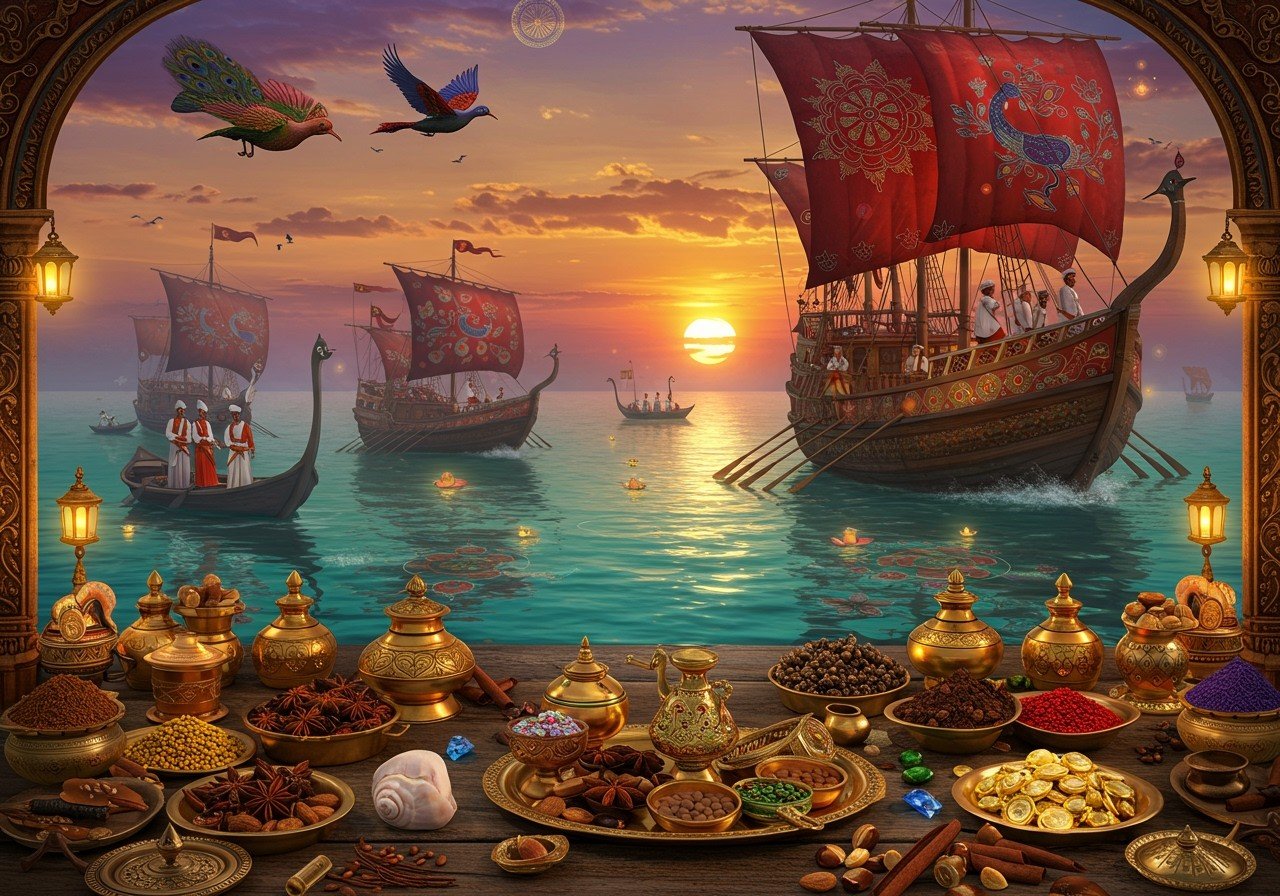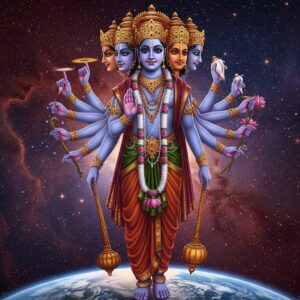
India’s maritime history, spanning millennia, has profoundly shaped global trade, culture, and geopolitics. This article delves into India’s maritime influence across different eras, highlighting key developments and their impact.
Ancient Maritime History
India’s maritime journey began in the 3rd millennium BCE with the Indus Valley Civilization (c. 3300-1300 BCE). Archaeological findings at Lothal and Dholavira reveal sophisticated dockyards and maritime engineering. The discovery of a large harbor at Lothal, Gujarat, testifies to the Harappan Civilization’s advanced seafaring capabilities. The Rig Veda’s mentions of sea voyages and trade further illuminate early connections with Mesopotamia, Egypt, and Southeast Asia. These maritime routes facilitated the spread of Buddhism and Hinduism. During the Maurya and Gupta empires (322-550 CE), Indian spices and textiles became integral to global commerce, further solidifying India’s maritime significance.
Medieval Maritime Expansion
The medieval period (9th-13th centuries) witnessed the rise of powerful kingdoms like the Cholas, Cheras, and Pandyas. The Chola navy’s expeditions significantly influenced Southeast Asian politics and culture. Trade flourished in the Arabian Sea and Bay of Bengal, linking India with the Middle East and East Africa. Indian merchants established communities in port cities like Malacca and Zanzibar, fostering cultural exchange. Advancements in shipbuilding and navigation, documented in medieval Indian literature and navigational texts, marked this era. The Delhi Sultanate and Mughal Empire (1206-1857) further integrated Islamic trade networks into India’s maritime activities.
Colonial Era Maritime Influence
The arrival of European powers significantly altered India’s maritime landscape. The Portuguese established Goa as a major trading hub and naval base. The Dutch, French, and British competed for control of Indian Ocean trade routes. The East India Company played a pivotal role in reshaping India’s maritime affairs. Battles and treaties during this period shaped colonial dominance. British rule saw the development of modern naval infrastructure, with contributions from Indian sailors and shipbuilders.
Post-Independence Maritime Developments
Following independence in 1947, India’s maritime policy and naval power evolved considerably. The Indian Navy now plays a vital role in national security and regional stability. Key naval operations demonstrate India’s growing capabilities. India’s maritime borders and Exclusive Economic Zones (EEZs) hold strategic importance. Increased participation in international maritime organizations reflects India’s growing global maritime engagement. The development of major ports and shipping industries has significantly impacted India’s economy and global influence.
Cultural and Social Impact of Maritime Activities
Maritime trade has profoundly influenced Indian art, literature, and architecture. Cultural exchanges via sea routes have shaped culinary traditions and religious practices. Coastal communities continue to preserve maritime heritage, showcasing the enduring legacy of India’s seafaring past. Maritime activities have impacted social structures and created economic opportunities in coastal regions. The contributions of Indian maritime figures and explorers are celebrated in folklore and performing arts. Contemporary efforts to promote maritime heritage through museums and cultural programs are ongoing.
Poojn: Your Source for Maritime Ritual Items
India’s rich maritime history is deeply intertwined with religious traditions and rituals. At Poojn.in, we offer a curated selection of essential items for maritime-related pujas and ceremonies, helping you honor this heritage. Our authentic collection includes:
- Whole turmeric sticks (Gota Haldi): Used in traditional water-blessing ceremonies to invoke prosperity and protection for seafarers. These unbroken turmeric pieces symbolize wholeness and auspicious beginnings.
- Pure copper vessels: Ideal for water offerings and other rituals associated with maritime traditions. Copper is considered sacred and believed to enhance the purity of the offerings.
- Sacred threads (Mauli): Used for boat and vessel blessings, symbolizing protection and good fortune on voyages. The red thread signifies strength and divine connection.
- Natural coconuts: Essential for water-related rituals, representing fertility and abundance. Coconuts are often broken as offerings to appease sea deities.
- Brass lamps (Deepak): Used in coastal ceremonies to illuminate and sanctify the surroundings. The flickering flame symbolizes dispelling darkness and inviting positive energy.
These items are commonly used for:
- Boat blessing ceremonies before embarking on voyages
- Harbor inauguration rituals to ensure safe and prosperous maritime activities
- Maritime trade prosperity pujas to invoke blessings for successful trade ventures
- Coastal temple offerings as part of traditional worship practices
- Water-body worship ceremonies to honor and appease water deities
Poojn.in ensures all ritual items meet traditional standards while offering the convenience of online shopping. We deliver across India, helping you preserve these ancient maritime customs with authentic puja supplies. Visit Poojn.in to explore our complete range of maritime ritual items. Our expert team can assist you in selecting the right items for your specific ceremony needs.
You can also find products like turmeric cream, incense sticks, Tulsi Kanthi Mala, and more on our website.
Conclusion
India’s maritime history is a tapestry woven with remarkable achievements, cultural exchanges, and global influence. From the ancient ports of the Indus Valley to the modern Indian Navy, India’s connection to the sea has shaped its identity and its place in the world. This enduring legacy continues to inspire, connecting India’s past with its future on the global stage.
FAQs on India’s Maritime Influence Through the Ages: A Historical Exploration
What is the history of Indian maritime? Indian maritime history traces its roots back to the Indus Valley Civilization, around 3300-1300 BCE. Ancient Indians were skilled navigators and traders, establishing maritime connections with Mesopotamia and beyond.
How did India’s maritime activities influence its culture? India’s maritime activities facilitated cultural exchange with diverse civilizations. Trade routes brought new ideas, religious practices, and artistic influences, enriching Indian culture.
Who were the prominent maritime powers in ancient India? The Cholas, Mauryas, and Guptas stand out as prominent maritime powers in ancient India. The Chola dynasty, in particular, possessed a formidable navy and extended its influence across Southeast Asia.
What is the Indian Ocean maritime system? The Indian Ocean maritime system is a complex network of trade routes connecting India with Africa, the Middle East, and Southeast Asia. It facilitated the exchange of goods, culture, and knowledge across these regions.
How did Indian maritime trade impact global commerce? Indian maritime trade significantly impacted global commerce by providing valuable commodities like spices, textiles, and precious stones. It connected India with major trading hubs and shaped global economic patterns.
Are there any famous maritime expeditions from India? Notable maritime expeditions from India include the Chola dynasty’s voyages to Southeast Asia. These expeditions established trade links and spread Indian cultural influence.
Where can I find resources on Indian maritime history? Resources on Indian maritime history can be found in libraries, academic publications, and online repositories. Many historical PDFs and research papers are available online.
What role did Indian maritime activities play in colonial history? Indian maritime activities played a crucial role in colonial history. European powers sought to control India’s strategic location and maritime resources, leading to conflicts and the establishment of colonial rule.
For further exploration, refer to these related articles:
Odisha’s Coastal Goddess Maa Ramachandi and the Ocean’s Influence
Ramachandi Temple, Odisha: A Spiritual Pilgrimage
Udupi Sri Krishna Matha: A Journey Through History, Significance, and Practices

